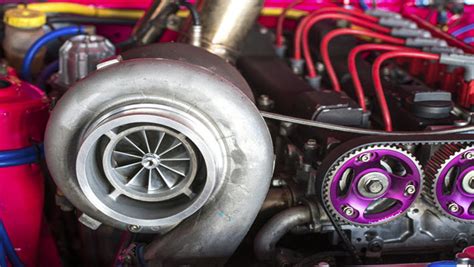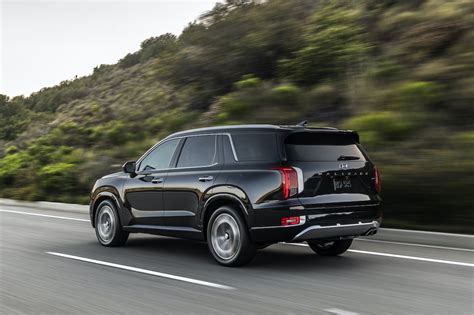Turbo technology has been around for many years and is increasingly becoming an essential part of cars and other vehicles. It helps to make your car more powerful, but what about speed? How fast can you go with a turbo?
The answer depends on a few factors, but the biggest factor is the type of turbo you have. Different types of turbos offer different levels of performance, which means that the speed you can reach with a turbo can vary significantly. Generally speaking, turbo applications can help to boost the power of an engine significantly, allowing much higher acceleration and top speeds.
The type and size of the turbo also affects the speed you can reach. The larger the turbo, the more power it can produce and the faster your car will be. Smaller turbos may lack some of the power of larger ones, but they can still give you impressive speeds.
The overall efficiency of your vehicle also plays a role in how fast you can go with a turbo. If you have an optimized engine, then you will be able to reach higher speeds with the same turbo. The same goes for a well-tuned suspension and an optimized body design. All of these things together can help you reach higher speeds, allowing you to fully unleash the power of a turbo.
Finally, your driving style can also affect how fast you can go with a turbo. If you are an aggressive driver, then you’ll be able to reach higher speeds than someone who drives more cautiously. However, it’s important to maintain your speed within the limits set by the law, as driving too fast can be dangerous.
Overall, how fast you can go with a turbo depends on a number of factors. The type of turbo you have, the size of the turbo, the efficiency of your vehicle, and your driving style can all affect your top speed. If you optimize your car and drive safely, then you’ll be able to reach impressive speeds with the help of a turbo.
Uncovering The Benefits Of Turbocharged Engines
The turbocharged engine is an innovative design of engine that packs a lot of power into a small space. It has been around since the 1970s and is now widely used in cars and trucks, as well as in boats, planes, and other vehicles. Here, we’ll look at the benefits of turbocharged engines, and how fast you can go with one.
To understand why turbocharged engines offer so much power, it helps to know what they are. A turbocharged engine is an internal combustion engine that uses forced induction to draw more air into the cylinders than would otherwise be possible. This increased air intake combined with fuel results in more power and a higher degree of efficiency. The turbocharger itself works by taking exhaust gases from the engine and then compressing them to increase their pressure. This increased pressure forces more air into the engine, resulting in more power.
The benefits of turbocharged engines are numerous. For starters, they offer a significant increase in power and performance. A turbocharged engine can reduce fuel consumption by up to 20 percent, while also reducing emissions. It can also help with engine longevity, as a turbocharged engine will handle higher temperatures and pressures than a naturally aspirated engine. Additionally, turbocharged engines are generally more reliable than naturally aspirated engines.
As for how fast you can go with a turbocharged engine, the answer is that it depends on the engine and the vehicle. Generally speaking, a turbocharged engine can reach speeds in excess of 200 mph. That said, it should be noted that the speed of a turbocharged engine is mostly dependent on the vehicle. For example, a turbocharged engine in a race car could easily reach speeds of 300 mph or more, while a turbocharged engine in a smaller sedan would likely be limited to about 120 mph.
When it comes to the cost of a turbocharged engine, it’s worth noting that they are generally more expensive than naturally aspirated engines. That said, the cost of a turbocharged engine is usually offset by the increased performance and fuel efficiency. It’s also worth noting that there are aftermarket kits available that can significantly reduce the cost of installing a turbocharged engine.
In summary, turbocharged engines offer a range of benefits, including increased power, fuel efficiency, engine longevity, and reliability. They are typically more expensive than naturally aspirated engines, but this cost is usually offset by the performance gains. Furthermore, turbocharged engines can reach incredibly high speeds, with some reaching speeds in excess of 200 mph.
How To Maximize Speed With A Turbocharged Engine
Turbocharging is an excellent way to maximize the speed of your vehicle. This technology has been around for decades and is becoming increasingly popular in modern vehicles. Turbocharged engines are designed to improve the power and fuel efficiency of the engine, allowing you to get more speed without sacrificing fuel economy. In this article, we will discuss how to maximize speed with a turbocharged engine.
The first step in maximizing the speed of your turbocharged engine is to select the correct turbocharger. The right turbocharger will depend on the type of engine that you have and the modifications that you are planning to make. Generally, a turbocharged engine will produce more power than a naturally aspirated engine, so it is important to choose a turbocharger that is the right size for your engine. Also, make sure that the turbocharger you select is highly efficient and able to operate at higher boost levels.
The next step in maximizing the speed of your turbocharged engine is to optimize your engine for high boost levels. This may require changing the camshaft, valvetrain, and other components. You should also check the turbocharger for signs of wear, as a worn turbocharger can cause a loss of power and speed. Additionally, you should ensure that the inlet and outlet pipes of the turbocharger are the right size so that they can flow enough air and exhaust gases.
The next step is to optimize the fueling system of your turbocharged engine. This includes ensuring that the fuel injectors are working properly and that the fuel pump is able to supply the engine with enough fuel. Additionally, you should make sure that the fuel pressure regulator is set to the correct pressure. Optimizing the fueling system can help to ensure that the engine is able to produce maximum power.
Finally, you should also ensure that the engine is properly tuned. This includes checking the spark plugs, spark plug wires, and other components of the ignition system. Proper tuning can help to make sure that the engine is running at its peak performance and that it is able to achieve the maximum amount of speed. Additionally, proper tuning can help to reduce emissions and improve fuel economy.
Overall, turbocharging is an excellent way to maximize speed with a turbocharged engine. By selecting the right turbocharger, optimizing the engine for high boost levels, optimizing the fueling system, and properly tuning the engine, you can maximize the speed of your turbocharged engine. With the help of a professional mechanic, you can achieve maximum speed with a turbocharged engine.
The maximum speed you can reach with a turbo depends on the make and model of the car.
A turbo can help a car’s engine produce more power than it would otherwise, allowing the car to accelerate faster and reach higher top speeds.
Most cars can be modified to mount a turbo, but some engines may not be compatible with the turbo system.
A turbo is powered by the exhaust gases from the engine, whereas a supercharger is powered by the engine itself.
Yes, a turbo can increase the horsepower of an engine, as it uses the exhaust gases to force more air into the engine.
A wastegate can be used to control air pressure and prevent a turbo from over-speeding.
A turbo timer is used to keep the engine running for a period of time after a turbocharged engine has been shut off, in order to cool the turbocharger.
Yes, over-speeding a turbo can cause it to overheat and damage the engine.
It is recommended to service a turbocharged car every 10,000 miles or once a year, whichever comes first.
The cost of a turbo depends on the make and model of the car, but typically ranges from $500-$2000.






